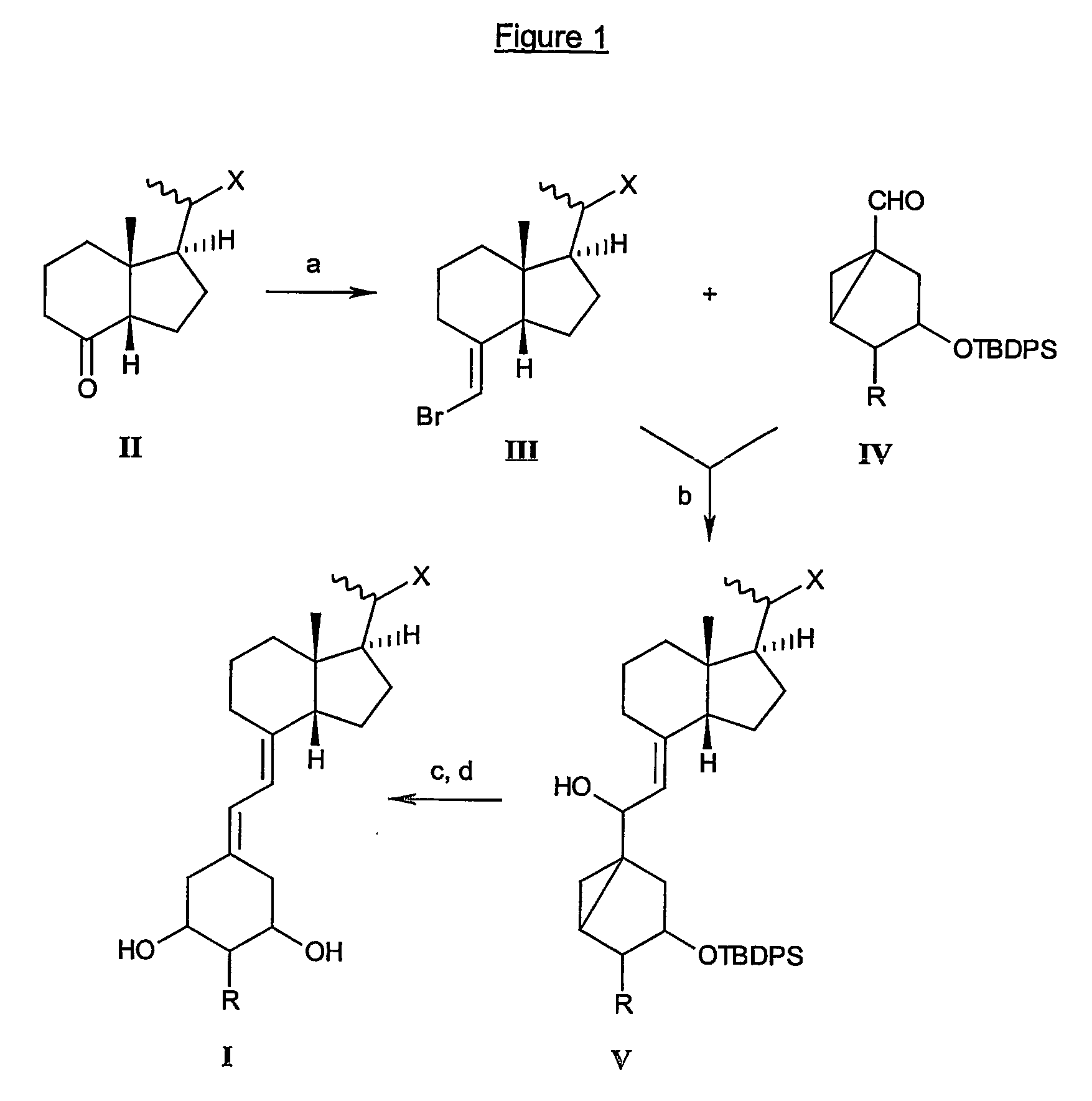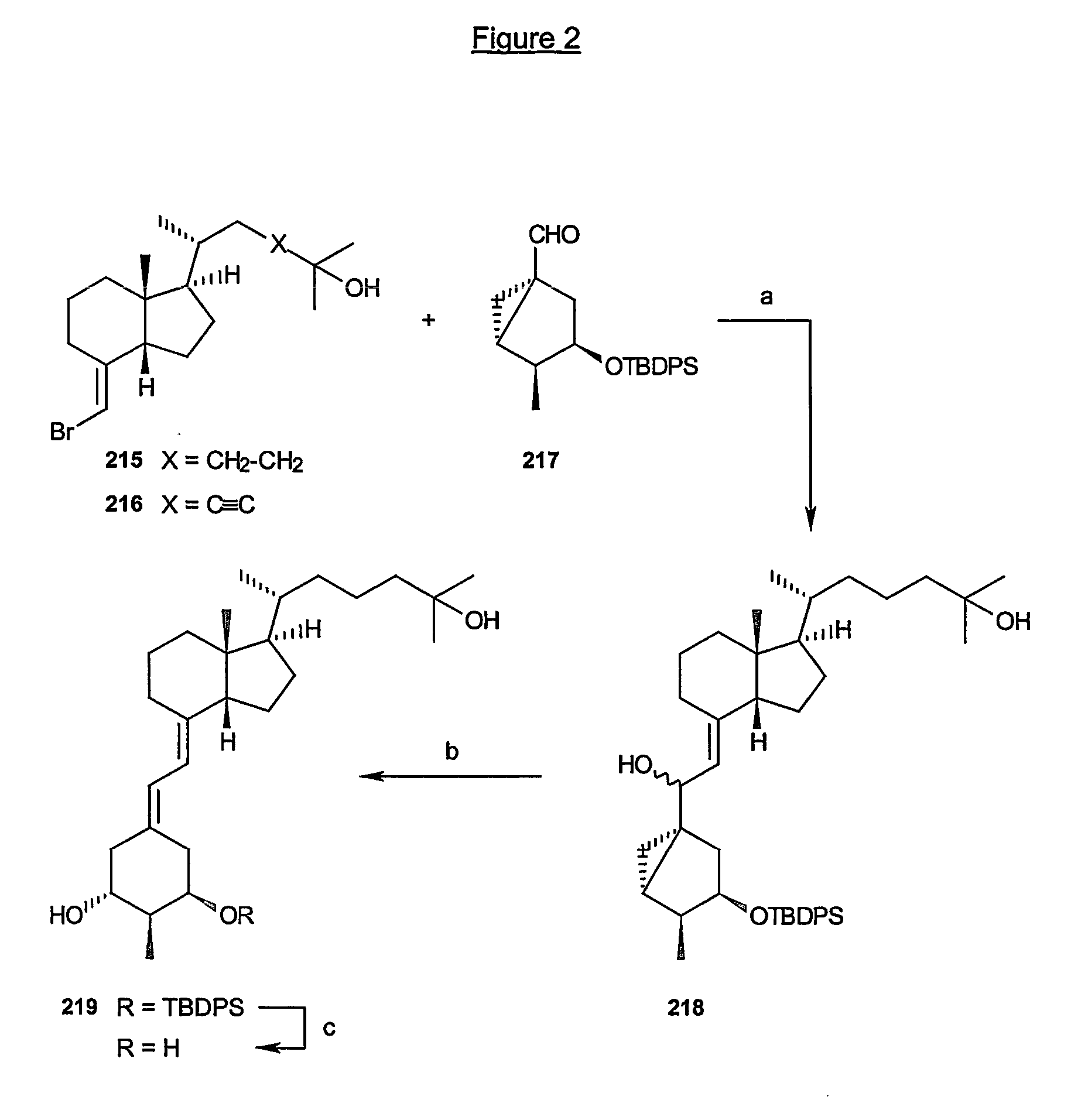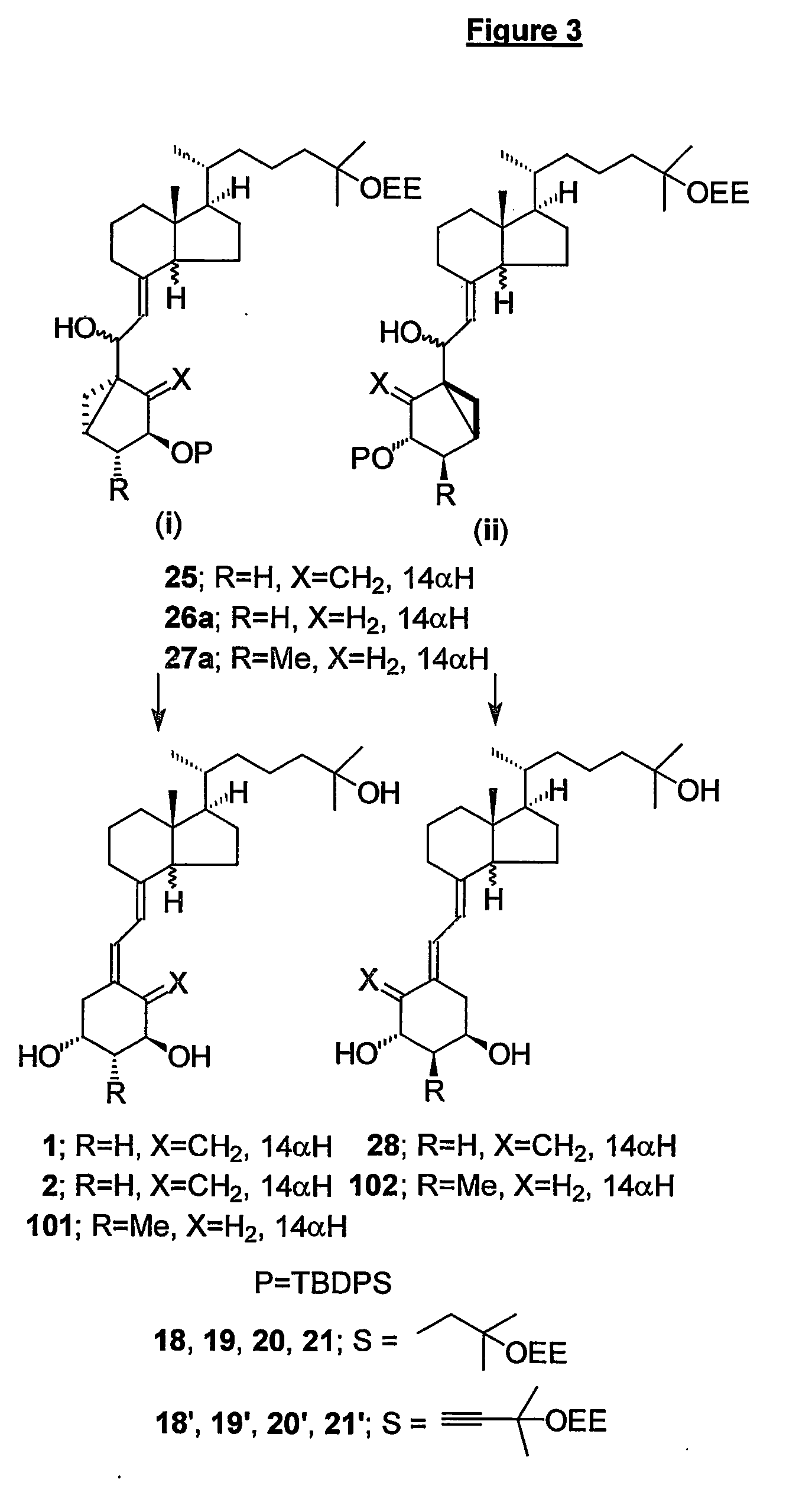Substituted vitamin d analogues and their therapeutic uses
a technology of substituted vitamin d and analogues, applied in the field of vitamin d analogues, can solve the problems of preventing the application of pharmaceutical doses, and achieve the effects of small hypercalcemic effect, small calcemic effect, and good cell differentiation properties
- Summary
- Abstract
- Description
- Claims
- Application Information
AI Technical Summary
Benefits of technology
Problems solved by technology
Method used
Image
Examples
example 1
Preparation of (4R,6R)-6-t-butyldiphenylsilyloxy-1-methyl-4-methoxycarbonyl-1-cyclohexene (Intermediate 33a)
[0133] Reference is made to FIG. 4. To a stirred solution of intermediate 30 (1.3 g, 5.65 mmol) and Ph3P (4.5 g, 17.16 mmol in THF (15 mL) was added dropwise DIAD (3.6 mL, 17.16 mmol, 95% pure) at 0° C. After stirring for 3 hours at room temperature, the reaction solution was subjected to flash chromatography (using a pentane / Et2O 3:1 mixture) affording a colorless oil. It was dissolved in a dry MeOH (20 mL) and then was treated with K2CO3 (0.36 g, 2.61 mmol). After stirring for 6 hours, the solution was poured into H2O-EtOAc, extracted (EtOAc), washed, dried and concentrated. Flash chromatography (using a isooctane / EtOAc 4:1 mixture) gave an intermediate as crystals from n-hexane-acetone [characterized as follows: m.p. 70-71° C., Rf=0.21 (isooctane / EtOAc, 4:1).—[α]Dr.t=21.6 (c=1.09, CHCl3).—C9H14O3 (170.21): calcd. C, 63.51; H, 8.29. found C, 63.33; H, 8.34]. TBDPSCI (1.55 m...
example 2
Preparation of the Ethyl Homologue (33b) of Intermediate (33a)
[0134] Reference is made to FIG. 5. To a stirred solution of the monobutyrate 31 (1.9 g, 7.04 mmol), imidazole (1.43 g, 21.03 mmole) and DMAP (44 mg) in dry DMF (15 mL) was added dropwise TBDPS chloride (3.6 mL, 98% pure, 43.57 mmole). The mixture was stirred at room temp for 10 h. The solution was poured into H2O-EtOAc, separated, extracted (EtOAc), washed, dried and concentrated. The residue was dissolved in a dry MeOH (80 mL) and K2CO3 (324 mg, 2.35 mmol) was added. The mixture was stirred at room temp. for 6 h and then the solution was poured into H2O-EtOAc, separated, extracted (EtOAc), washed, dried and concentrated. The residue was purified by flash chromatography (isooctane / EtOAc, 4:1) affording the intermediate alcohol (2.5 g, 81%) as a colourless oil. It (1.9 g, 4.32 mmol) was taken up in dry THF (30 mL) containing Ph3P (5.77 g, 22.04 mmol). To this solution a DIAD (4.1 mL, 22.04 mmol) was dropwise added at 0° ...
example 3
Preparation of methyl(1R,3S,4R,5R)-5-t-butyldiphenylsilyloxy-3-hydroxy-4-methyl-cyclohexane carboxylate (34a)
[0135] Hydroboration of the intermediate of example 1 was effected as follows. To a stirred solution of 33a (130 mg, 0.319 mmol), in THF (12 mL) was added dropwise a BH3 solution (380 uL, 1M in THF, 0.38 mmol) at 0° C. and stirring was continued at this temperature for 2.5 hours. Then H2O2 (0.5 mL) and saturated NaHCO3 (3 mL) were added. After stirring for 0.5 hour the reaction solution was poured into a H2O-EtOAc mixture and the organic layer was separated. The aqueous layer was extracted by means of EtOAc. The combined organic extracts were washed, dried and concentrated. The residue was purified by chromatography (using isooctane / EtOAc mixtures ranging from 9:1 to 4:1), thus affording intermediate 34a (48 mg, 35%) which was characterized as follows: Rf=0.21 (isooctane / EtOAc, 4:1).—[α]Dr.t=−51.8 (c=0.55, CHCl3).—IR (film): ν=3361, 2932, 2858, 1737, 1589, 1403, 1428, 1363, ...
PUM
 Login to View More
Login to View More Abstract
Description
Claims
Application Information
 Login to View More
Login to View More - R&D
- Intellectual Property
- Life Sciences
- Materials
- Tech Scout
- Unparalleled Data Quality
- Higher Quality Content
- 60% Fewer Hallucinations
Browse by: Latest US Patents, China's latest patents, Technical Efficacy Thesaurus, Application Domain, Technology Topic, Popular Technical Reports.
© 2025 PatSnap. All rights reserved.Legal|Privacy policy|Modern Slavery Act Transparency Statement|Sitemap|About US| Contact US: help@patsnap.com



